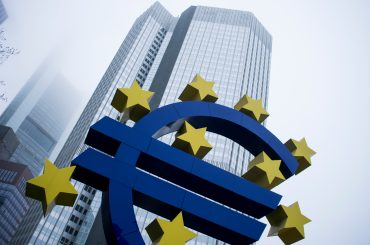

New European money laundering watchdog strengthens financial oversight across 27 EU nations with AI-powered monitoring tools
Key Takeaways
- AMLA launches summer 2025 as the EU’s central anti-money laundering authority, creating uniform Europe-wide practices and increasing regulatory pressure on financial institutions.
- AI reduces false positives by up to 98% in AML systems, allowing compliance teams to focus resources on genuine suspicious activity while enhancing detection rates by 30%.
- €10,000 cash limit enforced by 2027 across the EU to limit anonymous transactions, part of a comprehensive revamp of anti-money laundering regulations.
Introduction
The European Union transforms its fight against financial crime as regulators prepare to launch the Anti-Money Laundering Authority in 2025. With up to $2 trillion laundered globally each year, representing five percent of global GDP, the stakes for effective detection systems continue to rise.
Financial institutions face mounting pressure as AMLA establishes uniform standards across Europe while artificial intelligence emerges as the critical tool for managing compliance complexity. The convergence of stricter regulations and advanced technology creates both challenges and opportunities for banks struggling with outdated systems and overwhelming transaction volumes.
Key Developments
AMLA begins operations in summer 2025 with authority to oversee strategic management and coordination of national supervisory bodies. The agency focuses particularly on cross-border cases that have traditionally posed challenges for fragmented national approaches.
The regulatory overhaul includes technical standards and procedures designed to create consistent practices across member states. By 2027, a €10,000 cash limit takes effect throughout the EU, restricting anonymous transactions that facilitate money laundering activities.
BaFin reports that over 90% of the 320,000 suspicious activity reports filed in 2023 originated from the financial sector. These figures underscore the central role banks play in detecting and reporting potential money laundering activities under current frameworks.
Market Impact
The global AML software market experiences substantial growth driven by regulatory changes and increasing financial crime sophistication. Tech companies specializing in compliance solutions position themselves to capture significant market share as institutions accelerate technology investments.
Financial institutions recognize that non-compliance costs—including fines, reputational damage, and operational disruptions—exceed the expense of implementing advanced AI-driven AML systems. This calculation drives increased spending on compliance technology across the sector.
AI-powered AML tools create new revenue streams for technology providers while reducing manual workloads for financial institutions. The market expansion reflects both regulatory necessity and competitive advantage considerations for early adopters.
Strategic Insights
Traditional rule-based AML systems reach their operational limits as transaction volumes and complexity increase. Institutions using outdated IT structures struggle to maintain comprehensive risk perspectives, particularly for complex cross-border transactions that AMLA specifically targets.
Machine learning algorithms process massive datasets with greater speed and accuracy than conventional systems. McKinsey research indicates AI enhances suspicious transaction detection rates by up to 30% while dramatically reducing false positive alerts that burden compliance teams.
Modern AI platforms consolidate data from multiple compliance areas into shared systems, enabling consistently updated customer risk profiles. This integration addresses the data silo problems that limit traditional approaches to anti-money laundering efforts.
Expert Opinions and Data
Sanction Scanner emphasizes machine learning’s importance in improving detection capabilities by deactivating up to 98% of false positives. This efficiency gain allows compliance teams to focus resources on genuine suspicious activity rather than investigating irrelevant alerts.
According to Finextra, the exploration of AMLA’s role reveals how technology and regulation align for enhanced anti-money laundering effectiveness. The analysis shows financial institutions must prepare for integrated approaches combining regulatory compliance with technological advancement.
Industry data shows only 1-2% of AML alerts represent genuine threats, while the remainder constitute false positives that AI systems can help investigate and eliminate. This ratio demonstrates the efficiency gains possible through intelligent automation of compliance processes.
C3 AI Anti-Money Laundering demonstrates the practical benefits of AI implementation, reducing false-positive alerts by up to 85% while significantly boosting investigator productivity. These results provide concrete evidence of AI’s value in compliance operations.
Conclusion
AMLA’s establishment represents a pivotal moment for European financial crime prevention, creating both regulatory pressure and technological opportunity. Financial institutions must adapt their processes to meet unified EU standards while leveraging AI capabilities to manage increased compliance complexity.
The convergence of stricter regulations and advanced technology creates competitive advantages for early AI adopters. Institutions that successfully integrate machine learning into their AML operations position themselves for improved efficiency and reduced compliance costs as regulatory requirements continue to evolve.








